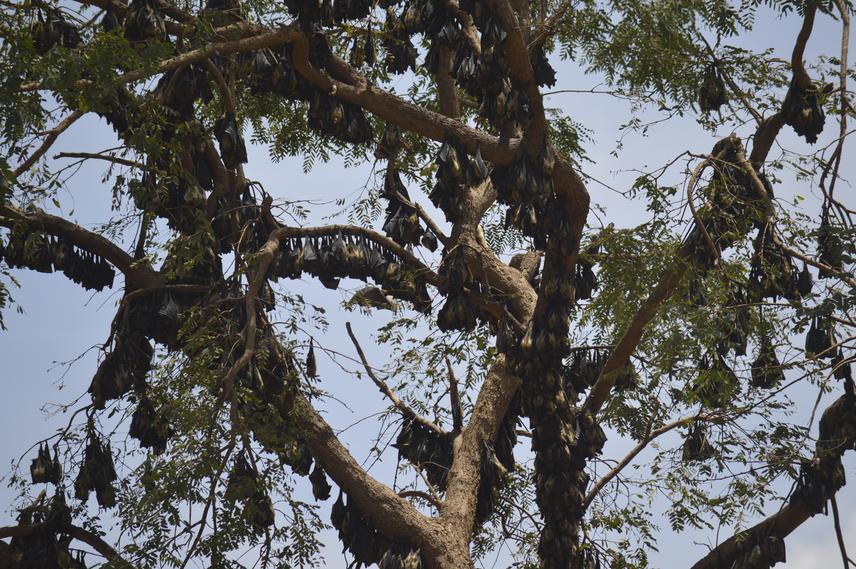Paul Webala
Other projects
19 Jul 2011
The Population Ecology, Diet and Movement of Straw-Coloured Fruit Bats, Eidoln helvum (Megachiroptera: Pteropodidae) in Western Kenya I
21 Sep 2012
The Population Ecology, Diet and Movement of Straw-Coloured Fruit Bats, Eidolon helvum (Megachiroptera: Pteropodidae) in Western Kenya II
To maintain viable populations of straw-coloured fruit bats (Eidolon helvum) in Kenya, through monitoring, public education and community awareness

Straw-coloured fruit bats (Eidolon helvum) are threatened in Kenya by habitat loss, negative public perceptions and through disturbance and persecution at roost sites. The project will first identify and map roost sites of the species across Kenya. Once mapped, funding will be centred on (prioritizing and) protecting sites with large colonies. At each of these sites, bats will be monitored via monthly counts.
We will:
i) provide an estimate of population size, distribution and the spatial and temporal dynamics of these,
ii) identify the drivers of E. helvum distribution and abundance.
These data and associated information will be fed into a readily accessible database, https://sites.google.com/site/eidolonafrica/. Additionally, four E. helvum bats will be tracked using GPS trackers. A tracking program is one avenue for addressing apparent knowledge gaps for this species. Monitoring ensures effective management in the face of growing anthropogenic impacts. Secondly, monitoring contributes to decision making through the establishment of a species’ abundance, distribution and dynamics and may allow for the assessment of management needs, management approaches and their effectiveness. Thirdly, monitoring likely provides critical information that may form the basis of assessment for conservation listing (e.g. the IUCN Red List of Threatened Species).
We will investigate roost-site selection and analyse diet from faecal matter to identify plants whose seeds are potentially dispersed by E. helvum. Alongside community outreach programs and awareness events like tree planting, cultural days and football match competitions where conservation messages are delivered, information on roles of E. helvum in tropical forest regeneration justifies its protection.
We link up bat colonies to tourist circuits to assist in leveraging bat protection because local people and counties will derive tangible benefits in the form of tourism revenues.
Livelihood analyses will be carried out to identify and initiate income generating activities (e.g. agroforestry, bee keeping, handcrafts) to minimise pressure on roost sites. With economic benefits, bats will be tolerated hence their survival.